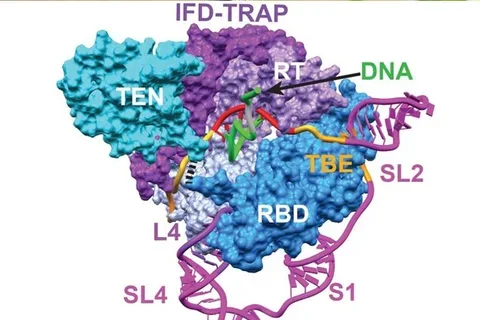Inner workings of telomerase revealed; scientists are the first to capture telomerase making DNA

The activity of telomerase is critical to health, affecting aging, cancer and stem cell renewal. But our understanding of the enzyme has been limited by a lack of atomic-level models. Now a team led by Juli Feigon, professor of chemistry and biochemistry at UCLA, has reported the highest-resolution 3D-map of telomerase's catalytic core to date, providing fresh insights into the human telomerase mechanism, mutations that affect its function, and a framework for designing therapies that target telomerase.
"We're now seeing not just the face of the clock, we're seeing how the components inside interact to make it work," Dr. Feigon said. "At each step, we zoom in closer and see more and more details, and can now begin to deduce not just what the enzyme looks like, but also how it functions. Knowing that may lead to the development of new drugs that target specific parts of the enzyme."
In addition to reporting the highest level of detail ever seen of the structure of telomerase's catalytic core, the researchers reported that they captured telomerase in the process of making DNA for the first time.
The research was supported in part by a CTSI voucher for cores services to Dr. Feigon.
Further reading:
Image caption:
Image source:



